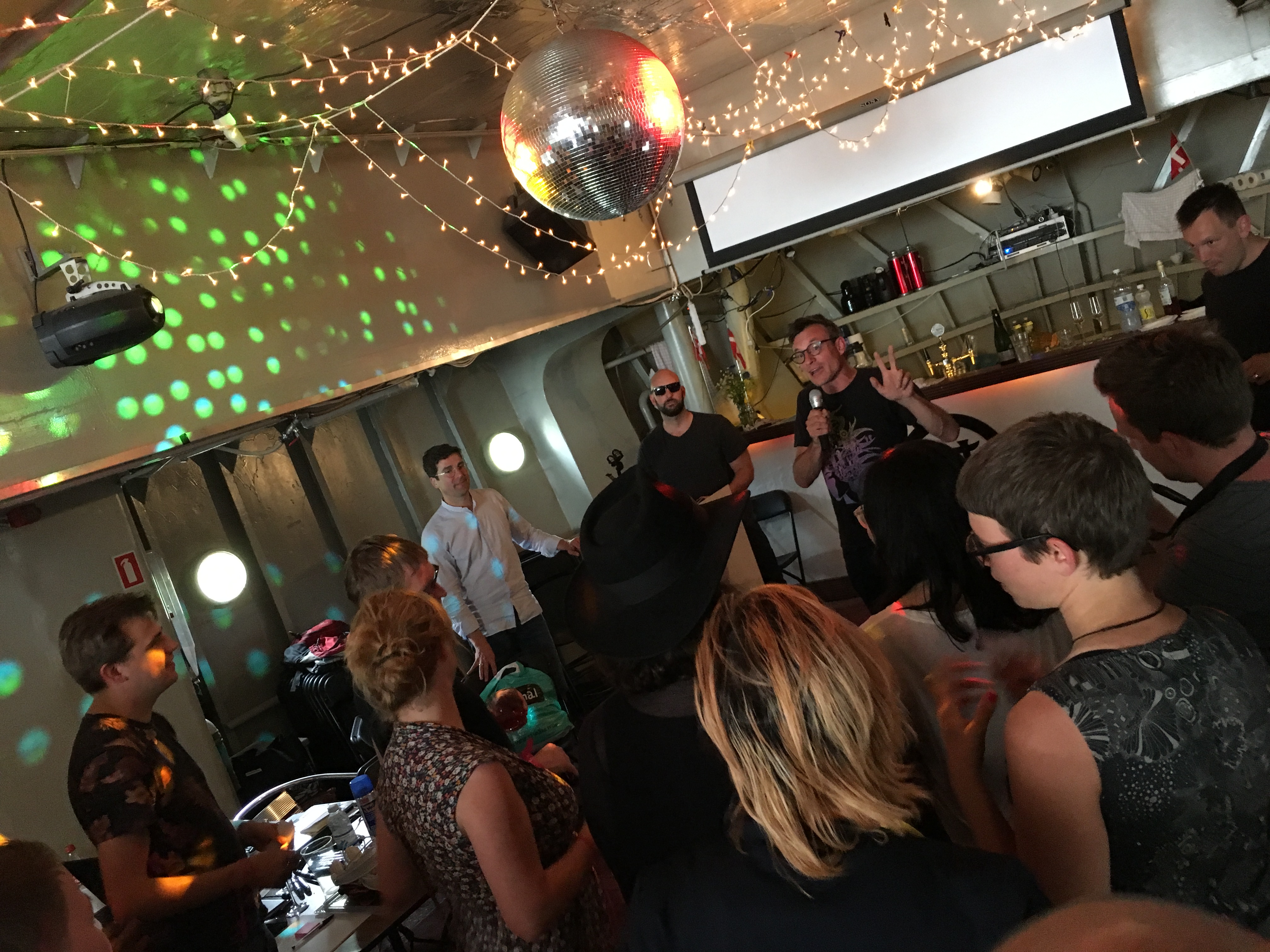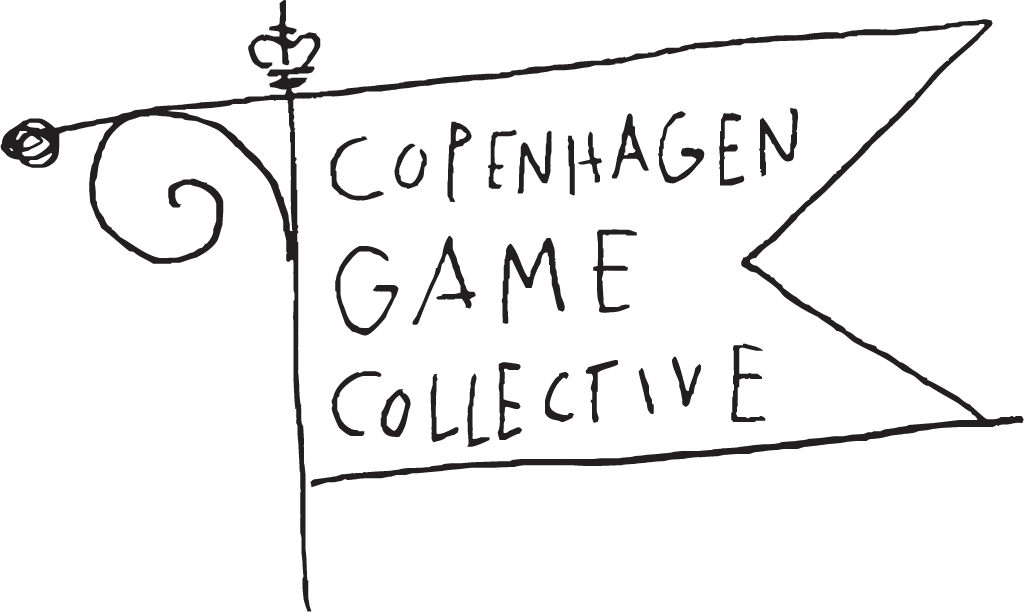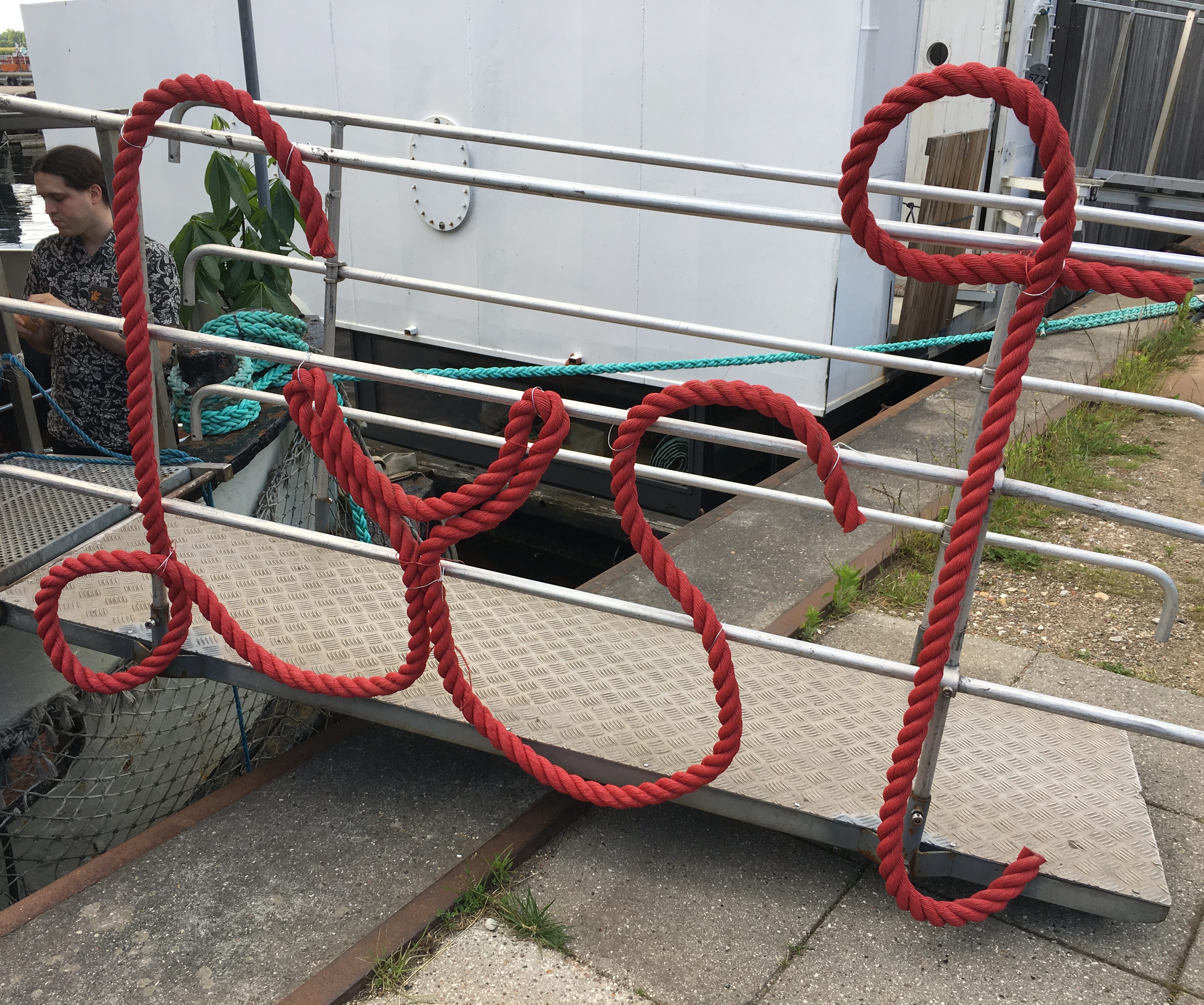Let’s get physical: A recap of the 4th Lyst Summit
For its fourth edition, the Lyst Summit & Game Jam anchored in a well-known harbour of Copenhagen. Most of the action happened on top of, inside and around “Love Boat” MF William Jørgensen. In traditional fashion, Lyst was kicked off by a one-day summit during which a selection of inspirational talk-bites were served. Why haven’t game designers done more to queer their plastic controllers? How does queer sexuality and gaming intersect? How can therapists use touch games to work with sexually abused kids? What’s the difference between ideologies of dating the The Sims and Kitty Powers’ Matchmaker? (The latter is closer to life.) How does BDSM feature in games and how does it treat consent? Why do we need to design for desires beyond adrenaline highs? What happens when artists turn their bodies into audience-controlled avatars? And Why oh why are there so many leather-clad, chain-swinging dominatrices in Beat ’em up games?
At the end of this eight-course menu, we were sufficiently satiated, and ready to take the evening to a more physical direction: dinner and group forming. How is group forming physical? Well, Lyst organisers and love cultists Andrea Brasch and Patrick Jarnfelt have a history of inventiveness when it comes to matchmaking materials. In previous years, we’ve been asked to complete jigsaw puzzles and find identical nature prints. This year, the wetness of the ocean must have inspired them to make us share and compare obscure juices in tiny flasks. Some of them could be distinguished at sight. My bright, yellow, cloudy fluid of team Ginger Ale was nothing like the more mature contents of Team Whisky. But what about poor members of Team Gin, Team Wodka, and Team Water? It was crystal clear: They had to be sorted by smell and taste. This challenge had a cohort of Lysters on a boat licking, sipping, and drinking each others’ juices. A worthy start into an intimate game jam, I’d say.
Once we were on our teams and placebo-tipsy from the micro-drinking, brainstorming ensued, interrupted only by welcome side acts like captain Bondy’s tour through the engine room, Tomer Cruise’s cocktail corner, where each drink is served with a catchy tune (“Nothing Camparis To You”), or a swim in the ocean. There were musical performances, casual strolls through spectacular sunsets, and, of course, creamy genital cupcakes. And there were important creamy-genital-cupcake-announcements:
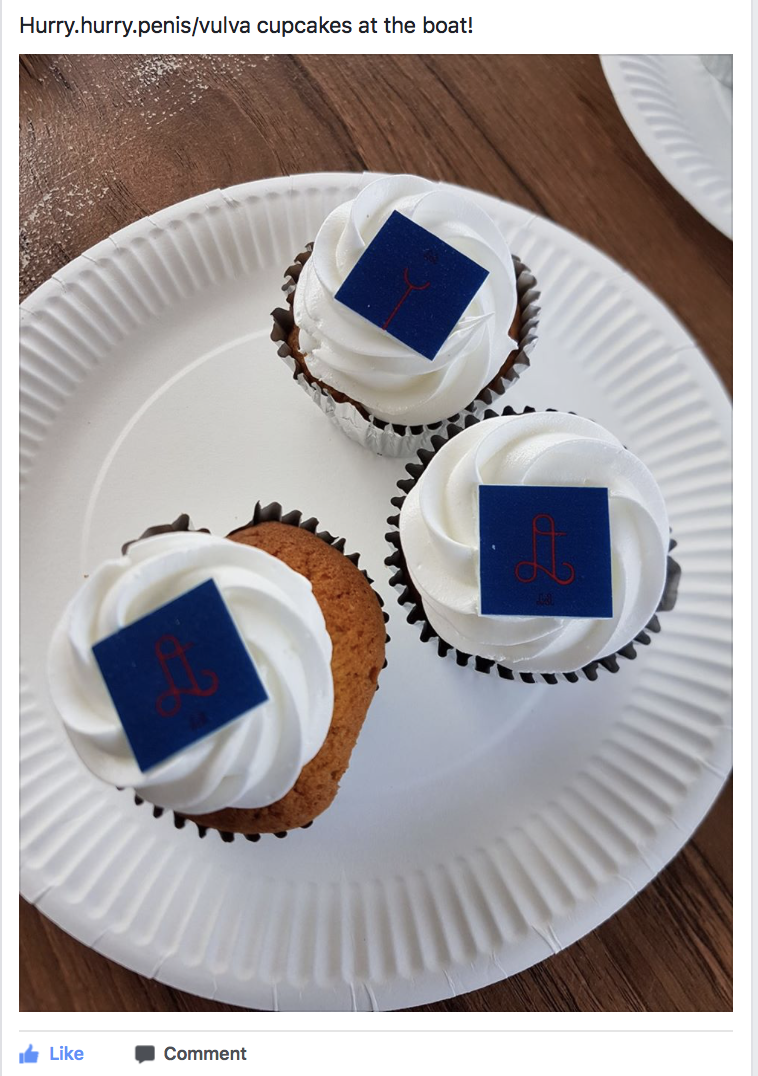
One other thing that happened in the first night was the Homunculus game. A game which, for mysterious reasons, never quite made it on the official game submission list. As a fitting prelude to Lyst’s physical game galore, Homunculus deserves special mention. It’s best described as a quiz performance game played on the body of a spandex-clad player-creature – wearing a morphsuit.
In its first iteration, Homunculus was already perfect: Two players take turns placing a “pleasure spot” on the Homunculus, a being languidly lounging on a table or other pedestal-like structure. The other player needs to find said spot, touching the Homunculus’ body respectfully. So far so simple. However, as living, breathing, and largely unknowable creatures, Homunculi are highly susceptible to pain, and they fervently protect their boundaries, as much as they crave pleasure. I must confess that wearing the Homunculus suit felt like gaining permission to act out likes and dislikes in ways jarring to humans. Well, the Homunculus and their way shall never be fully comprehended. As a human player, all I could do was manically laugh, clap and bounce around the boat:
Homunculus set the tone to what followed next: Lyst 2017 has yielded an extraordinary proportion of physical games this year (seven out of ten). This can have several reasons. First, perhaps game devs are finally growing up to practice their craft – the design of experience – as an opportunity to work with people and put social dynamics before shiny tech. Secondly, maybe game devs at Lyst, in particular, cannot be bothered to do the day-long crunch marathons required by code-heavy games. There are only 24 hours in the day. There are only two days on the ship. And there is a shipload of interesting people to bond with.
Perhaps, the answer lies somewhere in the middle. In any case, most games made spaces for physical human connection. Most literally. Here is a glimpse into those games which explicitly invited human bodies into their mechanics:
Take Blanket Space, which invites three players to meet under a blanket and share personal stories. In the intimacy of a confined space, knees touching, they exchange thoughts, based on topic cards. As an intense bonding ritual, the game makes “blanket space” for double attention: Being listened to and sharing presence.
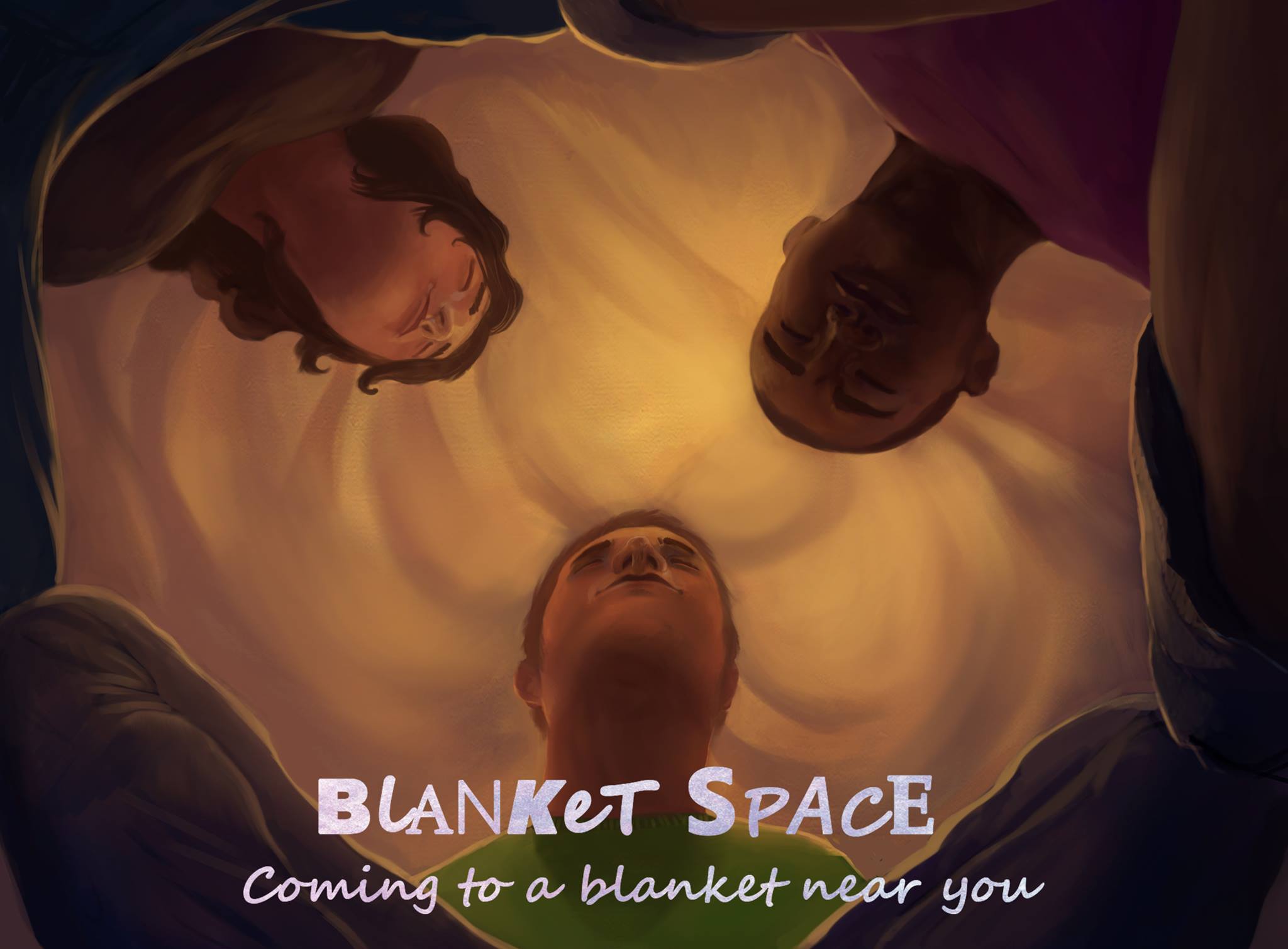
Presence is also the theme of Being There, an audio narrative performance for two players. Wearing headphones, the player-couple explores stages of a fling with a tragic end. As the players follow the story from their character’s perspective, they are allowed to physically enact as much of the narrative as they deem appropriate.
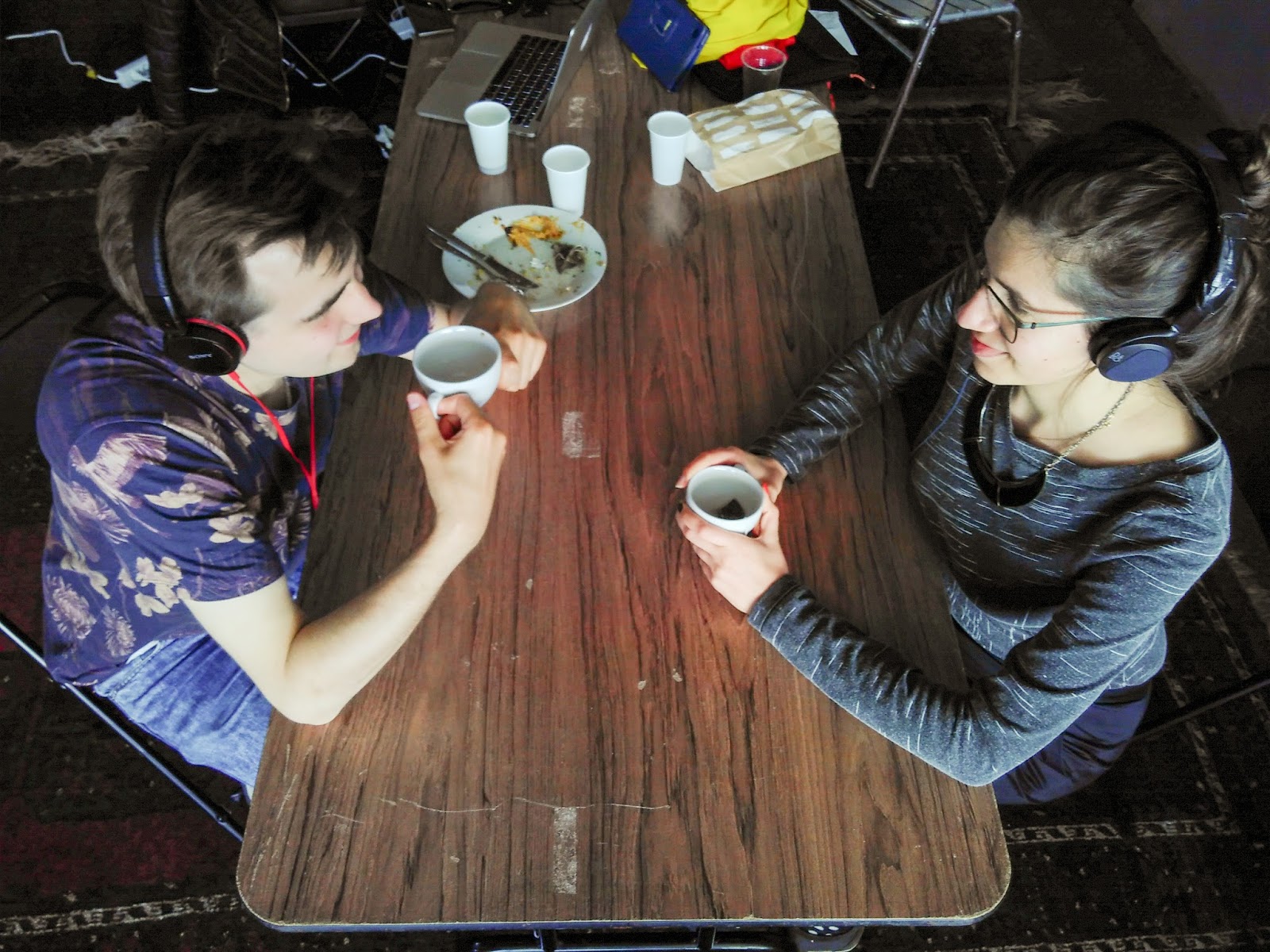
A novel thing at this year’s Lyst has been the inclusion of culinary items in game design. Eating and drinking as bonding mechanics feature in two games. In The Goddess and the Alchemist, one player is blindfolded and directed by the second player, the Divine Force, towards the ingredients of an intoxicating love potion. The catch: Divine force is, as always, obscure, and in this case exclusively a matter of touch. Thus “moved”, the blind alchemist is guided towards goddess-approved cocktail materials. In fact, rather than an altruistic gift, having the alchemist mix a decent drink is in the best interest of the goddess. The cocktail springing from their ethereal bond will be sipped by both when, according to the goddess herself, “It is Done”. In this case, a strong ‘n sweet raspberry mix:
The game bitter/sweet I collaborated on also uses food as a medium for human connection, but explores a different facet of it. What if you want to describe an experience from the past to someone, but are lost for words? What if you could, instead, describe this experience in terms of something you could both see, smell, taste, take in, and process together? What if you could say what kissing your lover, losing your friend, or facilitating an orgasm for your partner feels like through the texture, smell and taste of a fruit? Bitter/sweet is played in silence, with two players seated on a table, keeping eye contact. An experience prompt appears, and the first player selects appropriate ingredients in response, always mirrored by their partner. They take turns, thus sharing experiences by taking in, chewing and processing foods together.
Like bitter/sweet, the BDSM Sensual Deck Building game uses an electronic component to mediate parts of the experience. The game gives a glimpse into BDSM culture, particularly the element of consent, but does so in a novice-friendly fashion. The players first determine “Sub” and “Dom” roles. The Sub, then, selects a number of digital cards containing kinks and tools to be used by the Dom. Examples are being caressed with a cotton pad, blindfolding and bondage. The Dom receives the tablet, registers the Sub’s kinks, and a pleasurable BDSM session ensues. This is the point at which the tablet becomes less important; the real game takes place between the two bodies.
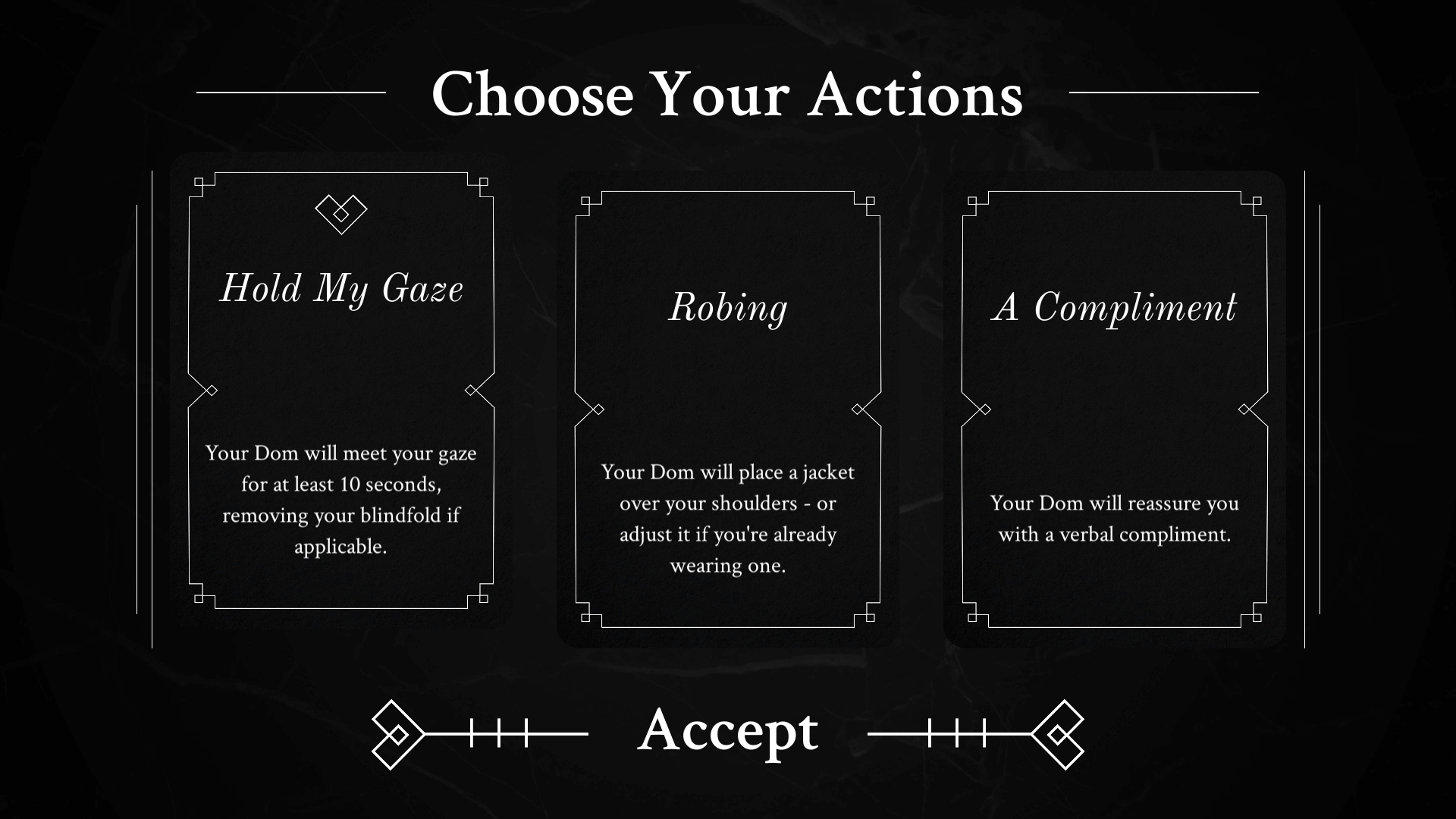
One of the more technologically ambitious projects was Space Invaded, a surprisingly gentle alien surgery simulator, in which one player, clad in VR headset and lying on a stretcher, endures a bloody operation. The second player-surgeon wields an adapted VR controller which, in the world of the VR patient, is the bloody blade rotating through vulnerable flesh. In RL, the “blade” is a small plastic wheel mounted to the controller, rolling up and down the patient’s body, as the operation progresses. I must admit I was scared, but found the set-up weirdly titillating, particularly when I asked the alien abductor-surgeon to hold my hand.
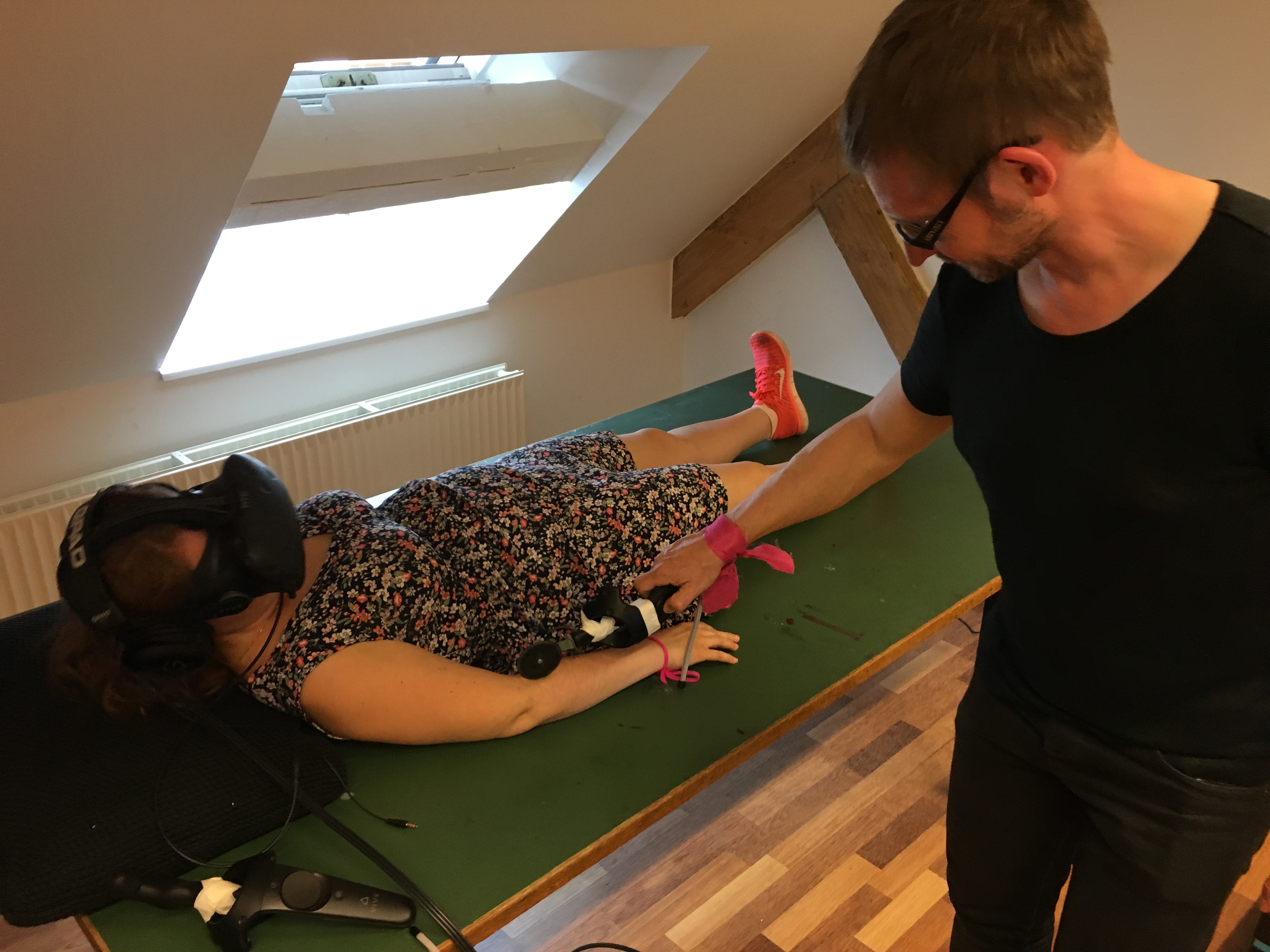
Finally, Disco Fiasco explores the more awkward side of intimate interaction, especially the question of (physical) compatibility. When entering Disco Fiasco, starring the infamous shade-wearing DJ PJ, we receive cards including ways in which we’d like to “land” with potential disco flirts. I already knew my Disco-life would end in a fiasco when I received “Shove partner” and “Say “Yes” while maintaining eye contact”. When the music stops, one makes a move in slow motion, giving the partner room to dodge unwanted advances in Bullet Time. The pair then decides whether the move has been successful or not. My “Yes” eye contact” turned out to be a winner. A dancer I hadn’t noticed before turned around, serendipitously went down on his knees, and proposed to me. “YES, YES, of course, I will marry you.”
Damn it, games, sometimes you make love and romance appear so easy.
